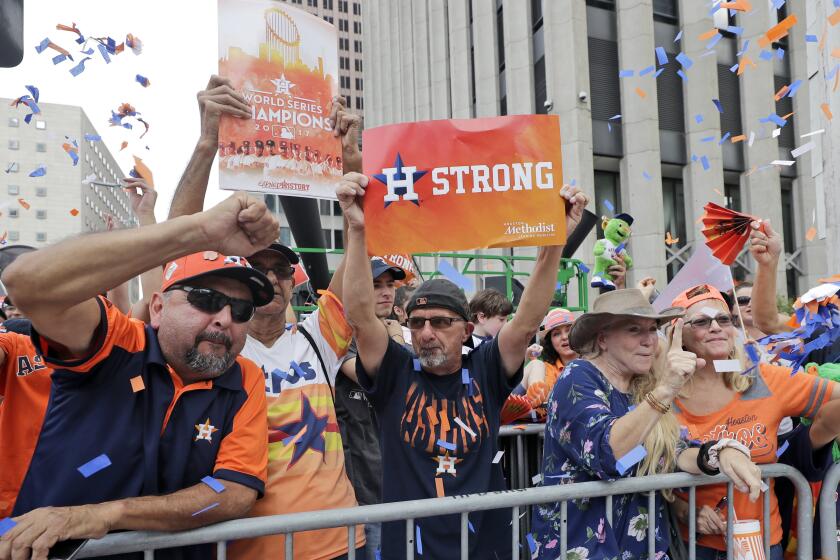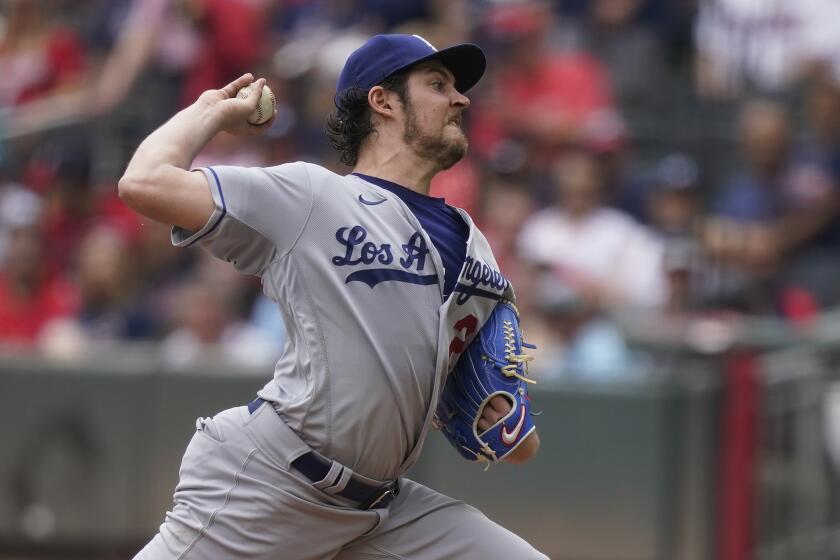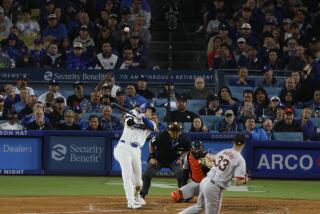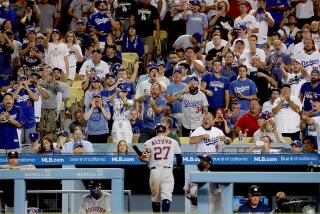The Astros say they stopped cheating by the 2017 postseason; evidence says otherwise
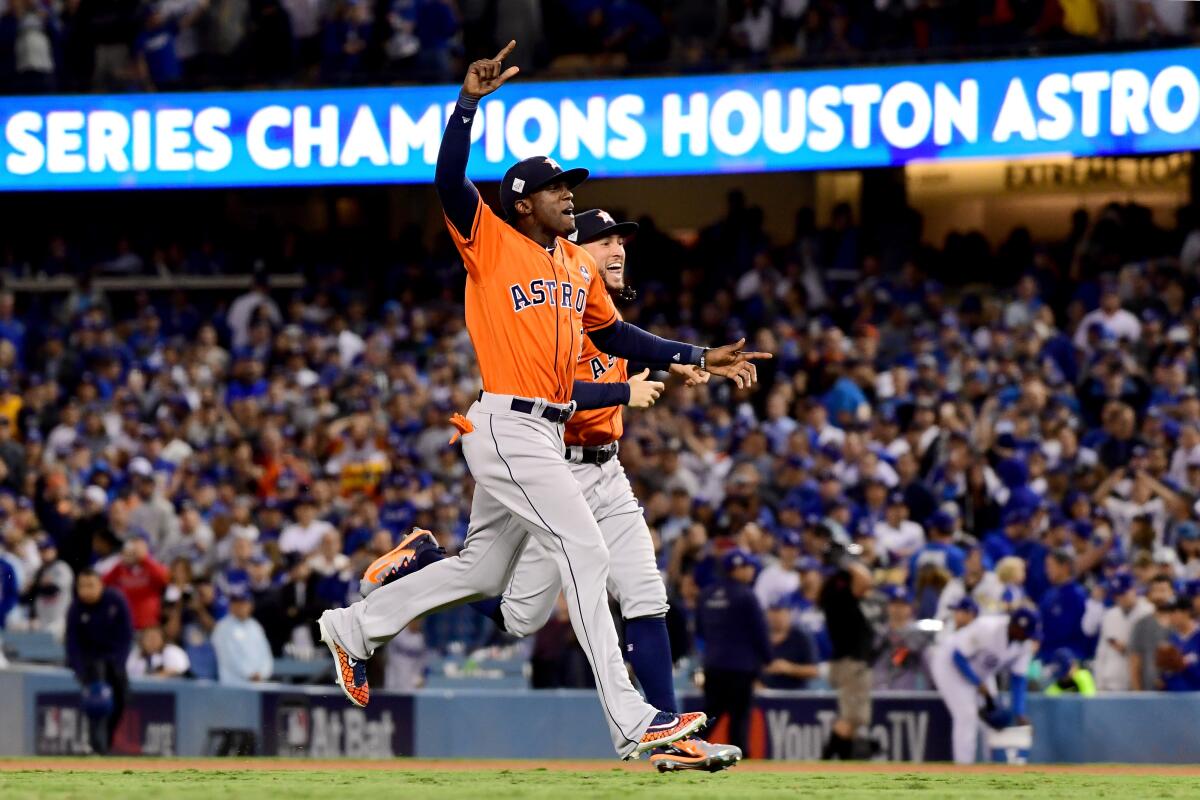
As the summer of 2017 rolled on and autumn drew closer, the Houston Astros’ deception deepened, and so did opponents’ suspicions.
On August 1, Tampa Bay Rays pitcher Chris Archer won a game at Minute Maid Park but suspected that on at least a few occasions the Astros had his pitches. Later that night, Archer was back in his hotel room when an Astros player FaceTimed him.
“Dude, you’ve got good s—-,” the player said, as later reported by the Athletic. “You were just tipping.”
This was a lie. Archer was not tipping his pitches. The Astros had banged the trash can thirty-nine times that night, and the Houston player was trying to cover his team’s tracks by tossing a red herring at Archer.
Although rumors had begun to spread throughout the league about the Astros, opponents remained short on facts. Pitchers tended to know when hitters had the signs. So did managers, coaches, and savvy position players. But it’s one thing to feel it and another to prove it.
Opposing teams would try to nail down what was happening. Oakland A’s manager Bob Melvin once confronted [then Astros manager AJ] Hinch and accused the Astros of using first-base coach Rich Dauer to steal signs. This gave Hinch, [former bench coach Alex] Cora, and the staff a good laugh: Dauer was a sixty- five-year-old lifer, a nice guy who wasn’t in on any scheme.
Eighteen months after the Houston Astros were found to be cheating in the 2017 season, it seems like fans have either forgiven or forgotten.
Elsewhere in the American League West, the Texas Rangers told starting pitchers to cover their mouths with their hands or gloves when they walked in from pregame warmups in the bullpen.
That’s when the batterymates often discussed pitch selection and strategy, and at Minute Maid you never knew if someone was watching.
On September 15, when commissioner Rob Manfred completed his four-month investigation into the Boston Red Sox’s use of an Apple Watch to steal signs, he issued the memo promising harsher penalties going forward for electronic sign stealing.
That day, Tom Koch-Weser, an Astros replay official, approached a higher-ranking member of the front office.
“We’ve got to stop Codebreaker,” Koch-Weser said, referring to a system developed by lower-level Astros staffers in which they logged opponents’ sign sequences into an Excel spreadsheet.
“Why?” his superior answered. “It’s legal.”
Codebreaker was a program designed and implemented by Koch-Weser and another lower-level Astros front office employee, Derek Vigoa. Initially pitched by Vigoa to general manager Jeff Luhnow late the previous season, the simple system involved logging sign sequences into a spreadsheet and attempting to use the information to figure out catchers’ sign sequences — in other words, to break their codes.
As far as the high-ranking team official knew—and he was not nearly alone—there was nothing wrong with the Codebreaker program, because it had never been used for in-game sign stealing. He thought it was simply a tool used before and after games.
Now Koch-Weser was telling him it violated Manfred’s newly emphasized rules?
::
A moment far more tense came on September 21, with the Chicago White Sox in town. Sox pitcher Danny Farquhar noticed a banging — he later described it in the Athletic article that blew the lid off the scheme as the sound of a bat hitting a bat rack — immediately after his catcher would put down the sign for a changeup.
With Evan Gattis up in the eighth inning, Farquhar’s catcher Kevan Smith signaled for a changeup. BANG. Gattis took the pitch for ball one.
Next, Smith called for a fastball. There was no bang. Gattis took a healthy cut and missed.
For the 1-1 pitch, Smith called for another changeup. This drew two bangs, and Gattis took it for a ball.
Next came a changeup, which naturally had elicited a bang. Gattis smacked it down the third-base line, just foul.
The ballpark wasn’t particularly loud that day, making the pattern of bangs audible. Farquhar called Smith out to the mound.
Seeing that their scheme had been detected, Astros players hurried to remove the TV set that had been mounted to the wall behind their dugout since May, and which provided the stolen signs.
The incident had a chilling effect. During that September 21 game, the Astros banged the trash can forty-one times. The next day they banged it once. In the team’s two remaining regular-season home games, they banged the can a total of two times. But by October they were again regularly using the trash can — all the way through the end of the World Series.
Seeing that their scheme had been detected, Astros players hurried to remove the TV set that had provided the stolen signs.
This would remain a point of contention for years. The initial report from the Athletic had sources saying the system continued into the postseason, and another source insisting that it did not. Astros players would later issue vehement denials that they were cheating in October.
“I’m telling you, World Series games are too important to use easy signs,” shortstop Carlos Correa told MLB Network reporter Ken Rosenthal later. “There are Morse codes out there. There are signs that nobody can get. There are so many variations you can use, and nobody can get that.”
In February 2020, Manfred said that there was “conflicting evidence” on that point, though he considered the evidence of cheating more credible than the denials.
Commentary: Major League Baseball is headed for a lockout. Is Ted Cruz the only one who can stop it?
Sen. Ted Cruz has a path to revoking Major League Baseball’s antitrust exemption, and preventing team owners from imposing a player lockout. Will he take it?
Specific data on the trash-can banging during the American League Championship Series and World Series doesn’t exist, but there is a reason for that.
Tony Adams, an Astros fan who spent countless hours reviewing video of the season and counting the bangs for his website signstealingscandal.com, said that the crowd noise in the playoffs was far in excess of anything he’d encountered in the regular season.
A review of sound files from crowd noise during the regular season and all postseason rounds reveals a dramatic change after the division series, lasting through the ALCS and World Series.
In the ALCS, the cheering becomes much louder and is at the forefront of the mix. This and other changes in the audio rendered the counting of specific bangs impossible.
Even without exact data to count the bangs, people with direct knowledge of the Astros’ actions that year, including one person involved in the October sign stealing, say that the team did indeed use its trash-can system during the postseason. Correa was right to say that sign sequences become more complex in the postseason, and he is not alone in doubting whether the playoff cheating helped — but, at best, he dodged Rosenthal’s question, perhaps because the truth was simple and damning.
People with direct knowledge of the Astros’ actions say that the team did indeed use its trash-can system during the postseason.
That truth, per witnesses who participated, was that the Astros became more careful about concealing the monitor with the live feed after Farquhar appeared to notice the banging incident in September, but they did not stop using it. Up to the end of the World Series, the team kept the monitor off the wall prior to games. With MLB officials, reporters, and others milling about, it seemed too risky to display — what if someone noticed and figured it out? But right as games were about to start, the Astros rehung the monitor. Then they removed it just as the games ended.
The cheating continued on the game’s biggest stage, and the Farquhar incident proved a mere blip. Period.
::
Best. Team. Ever?
The cover of the Sports Illustrated issue that hit newsstands on August 28, 2017, set a high bar for a team that hadn’t won the World Series in twenty-nine years. But these Dodgers were not only winning at a record clip, but doing it with the flair that marks a ball club as special.
Behind that bold headline, the SI cover featured a photo of Yasiel Puig, the mercurial slugger from Cuba, pouring a bucket of Gatorade over the head of third baseman Justin Turner after one of the team’s many thrilling victories.
The pair represented much of what was memorable about these Dodgers. Puig defected from Cuba and signed with the Dodgers in 2012. By the following year he had become a controversial sensation, hitting and throwing the ball like a rocket, licking his bat, talking to himself, showing up late for games—whatever he did, it generated attention and made him a polarizing but captivating figure.
Turner was a stocky veteran with red hair down to his shoulders and a lumberjack beard. Once marginalized as a bench player with the Mets, he signed with the Dodgers in 2014 and emerged as a star and clubhouse leader.
Those two helped to form the core of a Dodgers team that entered the postseason as favorites to win the World Series. Manager Dave Roberts brought a light touch, collaborating with the new-age front office on game strategy while allowing the players to be themselves.
Perhaps no one wanted a chance at the World Series more than Clayton Kershaw, who was still among the best pitchers in baseball, but whose inevitable physical decline had begun. On July 23 he left a start with back tightness and didn’t return until September 1.
Despite the five-week absence, Kershaw led the team in wins with 18, and posted a 2.31 earned run average.
The Dodgers finished the regular season with 104 wins, eleven games ahead of Arizona in the National League West. They proceeded to sweep the Diamondbacks in the division series and blow past the Cubs in the NLCS in five games. Next up where the Astros.
The World Series was tied 1-1 when it moved to Houston, and the Astros devoured Dodgers pitcher Yu Darvish. The trash can was in place, as was Carlos Beltrán’s legal skill of picking up on pitch tipping. For many years, Beltrán had one of the best in the game at looking closely at a pitcher to find little tells, or tips, that indicated what pitch he was about to throw.
With MLB cracking down on doctoring baseballs, the Dodgers stand to lose a lot if Trevor Bauer’s recent transformation on the mound continues.
In Game 3, he noticed — and of course shared with teammates — that when Darvish prepared to throw a fastball, he rotated the ball in his glove in search of the proper grip. He didn’t do this for off-speed pitches.
The Astros knocked Darvish out of the game after one and two- thirds innings — the shortest outing of the pitcher’s distinguished career.
In his 2020 interview with Rosenthal, which was intended to show that the Astros did not benefit from cheating in the postseason, Correa would note that the scoring plays in that game were not a result of changeups crushed out of the ballpark, but weaker hits and poor fielding:
“Marwin [González] hits a [single] with men on first and second. That’s [two] runs. Brian McCann hits a single with a man on second. Again, multiple signs. That’s [three] runs. [Alex Bregman added a sacrifice fly later that inning.] Evan Gattis, with [Josh] Reddick at first, hits a chopper to the pitcher, [Tony] Watson. He throws it away. Reddick scores from first. Those are the five runs we scored that day.”
The problem with that logic? It wasn’t always the hit that made a sign-stealing process effective; it could also be the takes earlier in the at-bat that enabled it to progress to a chopper or a throwing error.
In the plays that Correa referenced, González took a first-pitch slider before hitting his single on a fourth-pitch slider. McCann worked a seven-pitch at-bat. Gattis’s chopper came on the third pitch, right after he took a changeup.
There was no way to know exactly how sign stealing affected these at-bats, but to reference only the pitch that produced contact is an incomplete accounting.
Correa also noted that the Dodgers changed their sign sequences for the series, making it much more difficult to decode them. That is true. But again, the trash can and monitor were there, as were Astros players making the same ethical calculation about using them as they did during the regular season.
::
Dodgers suspicions about methods of potential cheating were not limited to sign stealing.
Before every game, an employee of the home team is assigned to “rub up” or “mud up” the game balls, massaging a dark substance into the baseball in order to make it less slick and easier for a pitcher to grip.
Often at Minute Maid Park that was the job of clubhouse manager Carl Schneider, who did it in the umpires’ room with varying degrees of supervision —umps didn’t tend to watch this closely.
The balls then went to a batboy, who, of course, was an employee of the home team. His job was to give those balls to the umpire throughout the game.
Shortly after the series moved back to Houston, the Dodgers felt that Astros pitchers were rejecting baseballs more frequently than is typical, tossing them back to the umpire and requesting new ones.
Then an L.A. pitcher approached his front office with an observation: The balls that the Astros were using were mudded up differently. They were visibly darker.
“These game balls are suspicious,” the pitcher said.
A similar issue had arisen in 2010, when the San Francisco Giants accused the Colorado Rockies of misusing the humidor that stored baseballs at Coors Field. The humidor was there to help deaden the baseballs in the Rocky Mountain altitude, where they tended to fly out of the park for cheap home runs.
The Giants believed that the Rockies were using the humidor balls only for their pitchers and were giving opposing pitchers untreated balls. MLB instituted a new policy that the umps had to personally watch as the balls were removed from the humidor and placed in a ball bag. The bag had to remain in the umpires’ sight throughout the game.
This time, the Dodgers thought that the Astros had balls mudded up more heavily for their pitchers, and that the batboy would deliver those to the ump during innings when the Dodgers were batting. When a Houston pitcher accidentally got a ball intended for the opposing pitcher, he would toss it back.
In 2017 MLB did not offer much guidance on how a baseball was supposed to be mudded up, so it was difficult to punish a team for it. In 2018 the league created and distributed posters showing the acceptable level of darkness for a game ball. Teams were directed to hang them in clubhouses.
In that way, even a complaint about the baseballs, unknown to the public until now, would change the rules of the game forever. It was an historic, era-defining World Series in so many ways.
From the book CHEATED: The Inside Story of the Astros Scandal and a Colorful History of Sign Stealing by Andy Martino published by Doubleday, an imprint of The Knopf Doubleday Publishing Group, a division of Penguin Random House LLC. Copyright © 2021 Andy Martino.
More to Read
Go beyond the scoreboard
Get the latest on L.A.'s teams in the daily Sports Report newsletter.
You may occasionally receive promotional content from the Los Angeles Times.
